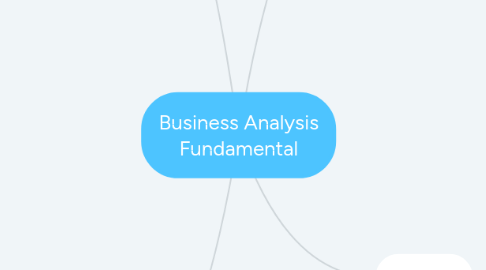
1. Initiating Project
1.1. Business Objective
1.1.1. Purpose?
1.1.2. Goals?
1.1.3. What is success? and How will it be measured
1.2. Business Case
1.2.1. Initial Analysis
1.2.2. Determine Potential Solutions
1.2.3. Write
1.2.3.1. Executive Summary
1.2.3.2. Problem Statement
1.2.3.3. Analysis
1.2.3.4. Solution Option
1.2.3.5. Cost-Benefit Analysis
1.2.3.6. Recommendation
1.2.4. Review
1.2.5. Present
1.3. Stakeholder
1.3.1. RACI Matrix
1.3.1.1. Responsible
1.3.1.1.1. Doing the task
1.3.1.2. Accountable
1.3.1.2.1. Has the authority
1.3.1.3. Consulted
1.3.1.3.1. Subject Matter Experts
1.3.1.4. Informed
1.3.1.4.1. Has to be kept update about progress
2. Requirement
2.1. SMART Requirement
2.1.1. Specific
2.1.2. Measureable
2.1.3. Attainable
2.1.4. Reasonable
2.1.5. Traceable
2.2. Process
2.2.1. Elicitation
2.2.1.1. Pulling the requirements through various techniques
2.2.1.1.1. Brainstorming
2.2.1.1.2. Workshop
2.2.1.1.3. Interviewing
2.2.1.1.4. Surveys
2.2.1.1.5. Documentation
2.2.1.1.6. Analyzing Interface
2.2.2. Analysis
2.2.2.1. Making sure have all the requirements in a way business and technical users will draw
2.2.2.1.1. Visual Modeling
2.2.2.1.2. Business Model
2.2.2.1.3. Technical Model
2.2.2.1.4. BPMN vs UML
2.2.3. Specification
2.2.3.1. Categorizing
2.2.3.2. Priorities
2.2.3.3. Making Business Requirement Document
2.2.4. Approval
2.2.4.1. Business
2.2.4.2. Technical
2.2.4.3. Sponsor
3. Types of Roles
3.1. Business Process Analyst
3.1.1. Help business in decision making from What-If Scenario
3.1.1.1. As Is Process
3.1.1.2. To Be Process
3.1.1.3. Gap Analysis
3.2. Requirements Analyst
3.2.1. While eliciting the needs of users is part of most Business Analyst roles
3.3. Systems Analyst
3.3.1. Takes the business requirements and converts them into functional requirements.
3.4. Data Analyst
3.4.1. Problem solving relates to data
3.5. User Experience Analyst
3.5.1. Focuses on creating the interface that end users interact with.
4. Lifecycles
4.1. Steps
4.1.1. Gathering Requirements
4.1.2. Design Solution
4.1.3. Development
4.1.4. Testing
4.1.5. Deployment
4.1.6. Maintain Solution
4.2. Methodology
4.2.1. Waterfall
4.2.1.1. Linear Progression
4.2.1.1.1. (+)
4.2.1.1.2. (-)
4.2.1.2. Use Case
4.2.1.2.1. Clear objective solution
4.2.1.2.2. Project team fully knowledgeable about solution
4.2.1.2.3. Strict Requirements
4.2.2. Incremental
4.2.3. Spiral
4.2.4. Scrum [Agile]
4.2.5. Rapid Application Development [Agile]
